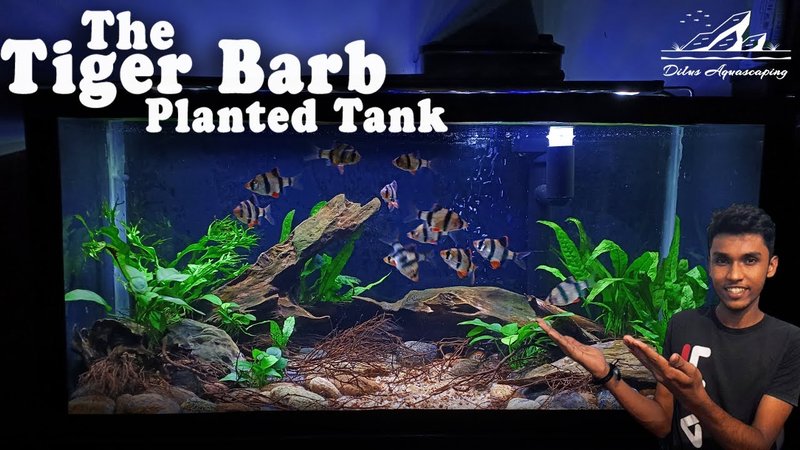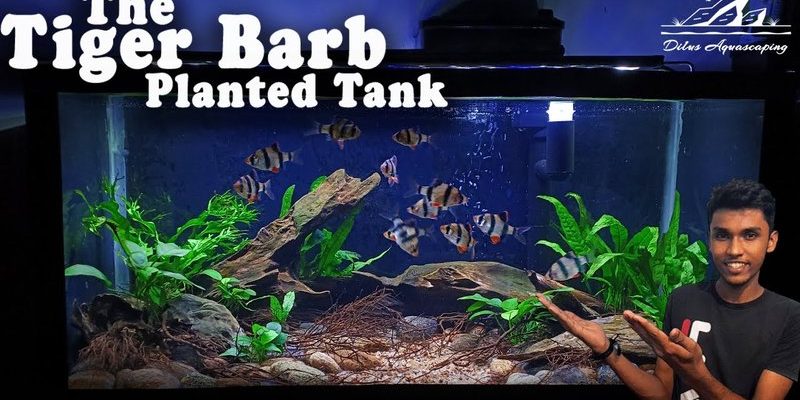
When thinking about barbs, imagine a bustling community. These fish are social, lively, and a bit mischievous. They love to swim around, explore, and interact with each other. That’s why creating the ideal tank setup isn’t just about choosing the fish; it’s about crafting an entire ecosystem that keeps them healthy and happy. So grab a cup of coffee, and let’s chat about how to create a vibrant aquatic haven for your barbs.
Choosing the Right Tank Size
When it comes to tank size, think of barbs like energetic kids who need room to play. Generally, a 20-gallon tank is a solid starting point for a small school of barb fish. This size not only provides ample swimming space but also helps maintain stable water conditions. Barbs can be quite active and love to dart around, so too small a tank can lead to stress or skirmishes.
If you plan on keeping a larger school—say, ten or more barbs—you’ll want to consider upgrading to a 30-gallon or more. A larger tank not only gives more room but also helps dilute waste in the water, creating a healthier environment for your fish.
Here’s the thing: overcrowding is a common mistake. While barbs are social fish and prefer to be in groups, too many fish in a small space can lead to aggression and territorial disputes. Aim for at least five or six barbs in your school to ensure they feel secure and less stressed.
Water Conditions for Healthy Barbs
Water quality is the backbone of any successful aquarium. For barbs, ideal water conditions will mimic their natural habitats, which are typically found in rivers and streams. You’ll want to maintain a temperature between 74°F and 78°F and a pH level around 6.5 to 7.5. Keeping the water clean and stable is important for your barbs’ health, so consider investing in a reliable water testing kit.
Filtration is also crucial. A good filter not only keeps the water clear but also provides essential oxygen. Make sure to choose a filter that’s suitable for your tank size, as under-filtration can lead to problems like algae blooms and unhealthy water.
You might be wondering about water changes. Regular water changes—at least 15% to 25% weekly—help manage nitrates and keep your barbs happy. Fresh, clean water will significantly improve their overall health and behavior.
Décor: Creating a Comfortable Environment
When it comes to décor, think of it as furnishing your barbs’ home. They love to explore, hide, and swim among plants and rocks. Start with live plants if you can; they not only serve as beautiful decorations but also help maintain water quality. Some great options include Java Fern and Anubias, as they’re easy to care for and thrive in various water conditions.
In addition to plants, creating hiding spots with driftwood or rock formations can help reduce stress. Barbs are curious and enjoy peeking around decorations. Just be sure any décor you choose doesn’t have sharp edges that could harm their delicate fins.
Don’t forget about open swimming space! While it’s important to have plenty of plants and hides, leave some room for your barbs to swim freely. They love to dart and chase each other, so having designated sections for both hiding and swimming is essential for a balanced habitat.
Lighting Needs for Barbs
Lighting is another important factor to consider in your tank setup. Barbs typically prefer a moderate lighting situation. Bright lights can promote algae growth, which can be annoying and unhealthy for your fish. Using a timer on your lighting system can mimic natural light patterns, giving your barbs a day/night cycle that helps maintain their natural behavior.
Also, consider using LED lights, which are energy-efficient and can help improve the aesthetics of your tank. Soft, diffused lighting works best to highlight the colors of your barbs without overwhelming them. Keep the lights on for about 10 to 12 hours a day to maintain a healthy environment.
Remember, if your tank has live plants, the lighting will also be crucial for their growth. Balance is key—too much light can lead to rapid algae growth, while too little can stunt your plants.
Companion Fish for Your Barb Tank
Barbs are social creatures, and keeping them with the right companions can make for a lively tank. Good tank mates include fish that share similar water conditions and aren’t too aggressive themselves. Consider species like:
- Corydoras Catfish
- Guppies
- Platies
- Zebra Danios
These fish tend to get along well with barbs and won’t compete for space or food excessively. Just be cautious to avoid aggressive species that might nip at your barbs’ fins.
You also want to ensure that any fish you introduce share similar care requirements. For instance, pairing fish that prefer different water temperatures can lead to stress and health issues for all involved.
Maintaining Your Tank: Routine and Care
Once your tank is set up, ongoing maintenance is key to keeping your barbs healthy. Regular tasks include checking water parameters, performing routine water changes, and cleaning the tank to prevent algae build-up.
Every week, test the water to ensure it stays within the ideal ranges. You don’t want to be surprised by a sudden spike in ammonia or nitrites, which can be harmful. If you notice unusual behavior from your barbs—like hiding more than usual or staying near the surface—it might be time to check on conditions.
And don’t forget, routine cleaning doesn’t have to be an overwhelming task. Breaking it down into smaller weekly tasks can make it more manageable. For example, clean the filter and check water levels one week, and focus on wiping down the tank and removing debris the next.
Creating the ideal tank setup for barbs is all about understanding their needs and providing a vibrant, active environment. From selecting the right size tank to ensuring proper water conditions and décor, each element plays a crucial role in their well-being. Remember, barbs thrive in lively spaces where they can swim, explore, and socialize, so think about their natural habits as you build your aquarium.
The effort you put into crafting a healthy habitat will be rewarded with happy, active fish that bring joy to your home. So go ahead, get started on your adventure with barbs, and enjoy the beautiful aquatic community you’ll create!

